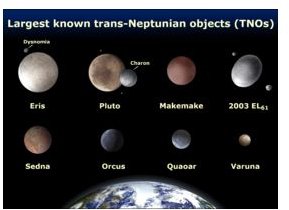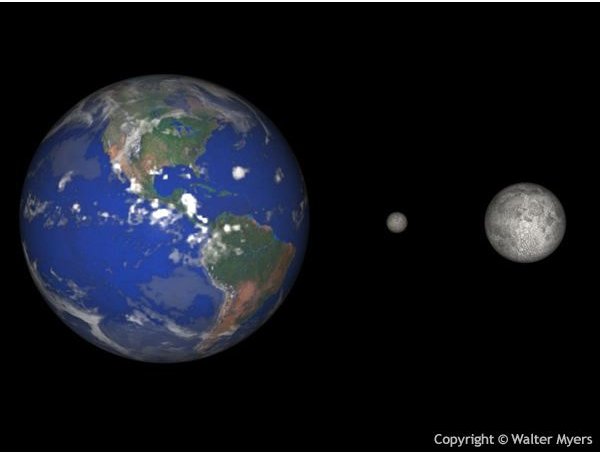What are Planetoids? Asteroids, Centaurs, Trans-Neptunian Objects...
Introduction - What is a Planetoid?
Planetoid facts aren’t limited to their being “minor planets.” In fact, planetoids are sometimes lumped together with asteroids too. However, with the huge number of astronomical objects being discovered, scientists are starting to make some distinctions among these. Sometimes it is easier to qualify a planetoid by what it is not rather than by what it is.
Ceres - The First Planetoid
A planetoid is neither a comet nor a dominant planet. The first planetoid discovered was Ceres, discovered in 1801. In the 200+ years since, more than 200,000 have been discovered. Most planetoids are located in the asteroid belt. The asteroid belt has been a vast source of planetoid facts. This “belt” of solar system bodies is located basically between the orbits of Mars and Jupiter. However, there are planetoids and asteroids in other parts of the solar system, including planetoids beyond Jupiter and Neptune, as well as “former” planet Pluto.
The Confusion - and the Solution
In 2006, the International Astronomical Union (IAU) reclassified comets and minor planets into small solar system bodies and dwarf planets. An object is called a dwarf planet if it is large enough that its own gravity is sufficient for it to achieve hydrostatic equilibrium. Hydrostatic equilibrium is a state wherein the planetoid’s compression from gravity is balanced by an opposing pressure gradient. Think of the pressure gradient force of Earth, which prevents its atmosphere from collapsing due to gravity, while gravity prevents the atmosphere from diffusing out into space.
Confusing the issue further is the fact that there are objects that achieve hydrostatic equilibrium, such as Saturn’s moon Mimas, that aren’t planetoids because they do not orbit the sun. As of 2010, the IAU has classified five planetoid objects as dwarf planets:
- Ceres
- Pluto
- Haumea
- Makemake
- Eris
500000 Planetoids
There are some 500,000 planetoids, with thousands being discovered every month. Of these, about 250,000 have orbits that are known well enough that they have been assigned permanent numbers, and of these, 15,000 or so have official names. One of the interesting planetoid facts is the fact that some of the low numbered planetoids (such as (3708) 1974 FV1 do not have names, while there are some named planetoids with numbers over 200,000, so “seniority” does not automatically grant a name to a planetoid.
Planetoid Classification
Some more of the basic planetoid facts include their classification into three main categories: asteroids, centaurs, and trans-Neptunian objects.
-
Most asteroids are located in the inner solar system, with main belt asteroids following circular orbits in the region between Mars and Jupiter. But there are near-earth asteroids as well. There are also asteroids that share Jupiter’s orbit and are “locked” to Jupiter gravitationally. There are thought to be as many of these as there are main belt asteroids.
-
Centaurs are planetoids located between Jupiter and Neptune. Their orbits are unstable due to their proximity to the planetary giants.
-
Trans-Neptunian objects (those at or beyond Neptune’s orbit) include Neptune Trojans, which share Neptune’s orbit. It is unknown how many trans-Neptunian objects there are, but they could far exceed the number of main belt asteroids. Other trans-Neptunian objects include planetoids located in the so-called “scattered disc,” a distant area of the solar system that somewhat overlaps the Kuiper Belt (a region of our solar system from the orbit of Neptune to approximately half a light year from the sun) as well as objects in the even more extensive Oort cloud, thought to be the source of comets with long orbital periods.

Summary
The main planetoid facts to remember are that they are neither planets nor comets, they are located many places from near the Earth to well beyond Neptune, the farthest planet, and there are hundreds of thousands of them, with tens of thousands more being discovered every year.
References
https://www.iau.org/public_press/news/release/iau0603/questions_answers/
https://www.minorplanetcenter.org/iau/lists/ArchiveStatistics.html
Images:
https://www.outofthecradle.net/archives/2008/10/teacher-tools-for-the-high-frontier-rocks-in-space/
https://www.thelivingmoon.com/43ancients/02files/Eris_More_Massive_than_Pluto.html
